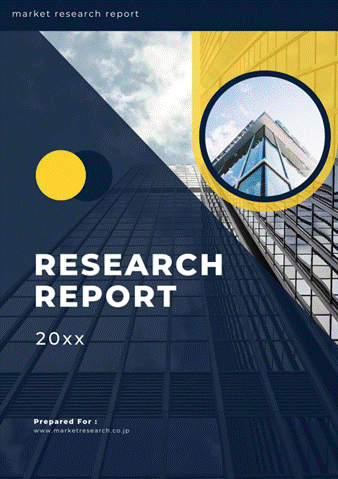 | • レポートコード:MRC2103C063 • 出版社/出版日:Mordor Intelligence / 2021年2月25日 • レポート形態:英文、PDF、114ページ • 納品方法:Eメール(受注後2-3営業日) • 産業分類:医療 |
| Single User | ¥629,000 (USD4,250) | ▷ お問い合わせ |
| Team User | ¥703,000 (USD4,750) | ▷ お問い合わせ |
| Corporate License | ¥1,110,000 (USD7,500) | ▷ お問い合わせ |
• お支払方法:銀行振込(納品後、ご請求書送付)
レポート概要
| 本調査資料では、世界の医療機器技術市場について調査し、イントロダクション、調査手法、エグゼクティブサマリー、市場動向、機器別(呼吸用機器、心臓病用機器、整形外科用機器、画像診断用機器、内視鏡機器、その他)分析、地域別分析、競争状況、市場機会/将来の見通しなどを掲載しています。 ・イントロダクション ・調査手法 ・エグゼクティブサマリー ・市場動向 ・世界の医療機器技術市場規模:機器別(呼吸用機器、心臓病用機器、整形外科用機器、画像診断用機器、内視鏡機器、その他) ・世界の医療機器技術市場規模:地域別 ・競争状況 ・市場機会/将来の見通し |
The medical devices market is estimated to witness a CAGR of around 5.7% over the forecast period. Certain factors that are driving the market growth include the rising prevalence of chronic diseases and related increases in disability-adjusted life years, technological advancements in medical devices, and a consistent increase in the aging population.
Globally, the disease burden is shifting from infectious diseases to chronic conditions, with a corresponding escalation in the burden of cancer. Chronic diseases, such as heart disease, cancer, diabetes, stroke, and arthritis, are long-lasting in their effects. Cancer and cardiovascular diseases are the two most common causes of mortality. According to the World Health Organisation (WHO), globally, chronic diseases kill more than 38 million people each year. Moreover, cardiovascular diseases account for most of the chronic disease-related deaths in 2016 (17.5 million people annually), followed by cancers (8.2 million), respiratory diseases (4 million), and diabetes (1.5 million). These four groups account for 82% of all chronic disorder deaths. The rise in the incidences of chronic diseases has increased the demand for medical devices. The other factors, such as investment in R&D and the need for preventive healthcare, are driving the medical devices market.
However, strict FDA regulations are bound to be present in the field of healthcare. The regulatory framework for medical devices is not standardized in many countries across the world. The other factors, such as uncertainty in reimbursement and an increase in the cost of services, are also hindering the growth of the market studied.
Key Market Trends
Cardiology Devices Segment is Expected to Hold a Major Market Share in the Medical Device Market
According to the American Heart Association Research, approximately 2,300 Americans die due to cardiovascular diseases each day, an average of one death every 38 seconds. Lifestyle-related changes, eating habits, and stress lead to several heart diseases and this is the foremost cause of deaths across the world and the need for cardiac devices for treatment. In addition, as per the World Heart Federation, coronary heart disease is now the leading cause of death worldwide. An estimated 3.8 million men and 3.4 million women die each year from coronary heart disease. In addition, 80% of the deaths occur in low- and middle-income countries.
Moreover, innovations are leading the early part of the 21st century, and the effect on cardiovascular devices has been specifically significant. Keeping up and determining the relevance of these inventions and their role in patient care is a relentless challenge and opportunity for providers, as well as scientists. Thus, the high prevalence of cardiovascular diseases across the world cardiology devices segment is expected to show growth over the forecast period.
North America Dominates the Market and is Expected to Continue the Same during the Forecast Period
The primary growth driver of the medical devices market is a higher investment of the yearly revenues into product innovation and constant improvement of existing technologies. Mobile health and telemedicine have been growing in the United States, with an increasing rate of adoption.
According to the Centers for Disease Control and Prevention, in the year 2017, coronary heart disease is the most common type of heart disease, killing approximately 365,914 people in the United States. Moreover, about 18.2 million adults age 20 and older have coronary heart disease (CAD), 2 in 10 deaths from Coronary heart disease happen in adults less than 65 years old.
Furthermore, continuous R&D, to develop technologies that benefit the human race, is one of the major driving factors for the US medical devices market. The US bio-implant market is also driven by advanced technologies, including 3D printing, nanotechnology, and laser technology.
Competitive Landscape
The medical devices market is fragmented competitive and consists of a number of major players. Companies, like Abbott Laboratories Inc, F. Hoffmann-La Roche Ltd, Philips Healthcare, Siemens Healthineers(Siemens AG), Stryker Corporation, Boston Scientific Corporation, Johnson & Johnson, Medtronic PLC, Smith & Nephew PLC, and GE Healthcare, among others, hold the substantial share in the market studied.
Reasons to Purchase this report:
– The market estimate (ME) sheet in Excel format
– 3 months of analyst support
1 INTRODUCTION
1.1 Study Deliverables
1.2 Study Assumptions
1.3 Scope of the Study
2 RESEARCH METHODOLOGY
3 EXECUTIVE SUMMARY
4 MARKET DYNAMICS
4.1 Market Overview
4.2 Market Drivers
4.2.1 Growing Geriatric Population across the World
4.2.2 Rising Prevalence of Chronic Diseases and Related Increase in Disability-adjusted Life Years
4.3 Market Restraints
4.3.1 Strict Regulatory Polices and Uncertainty in Reimbursement
4.4 Porter’s Five Forces Analysis
4.4.1 Threat of New Entrants
4.4.2 Bargaining Power of Buyers/Consumers
4.4.3 Bargaining Power of Suppliers
4.4.4 Threat of Substitute Products
4.4.5 Intensity of Competitive Rivalry
5 MARKET SEGMENTATION
5.1 Type of Device
5.1.1 Respiratory Devices
5.1.2 Cardiology Devices
5.1.3 Orthopedic Devices
5.1.4 Diagnostic Imaging Devices (Radiology Devices)
5.1.5 Endoscopy Devices
5.1.6 Ophthalmology Devices
5.1.7 Neurology Devices
5.1.8 In Vitro Diagnostics (IVD)
5.1.9 Other Devices
5.2 Geography
5.2.1 North America
5.2.1.1 United States
5.2.1.2 Canada
5.2.1.3 Mexico
5.2.2 Europe
5.2.2.1 Germany
5.2.2.2 United Kingdom
5.2.2.3 France
5.2.2.4 Italy
5.2.2.5 Spain
5.2.2.6 Rest of Europe
5.2.3 Asia-Pacific
5.2.3.1 China
5.2.3.2 Japan
5.2.3.3 India
5.2.3.4 Australia
5.2.3.5 South Korea
5.2.3.6 Rest of Asia-Pacific
5.2.4 Middle-East & Africa
5.2.4.1 GCC
5.2.4.2 South Africa
5.2.4.3 Rest of Middle-East & Africa
5.2.5 South America
5.2.5.1 Brazil
5.2.5.2 Argentina
5.2.5.3 Rest of South America
6 COMPETITIVE LANDSCAPE
6.1 Company Profiles
6.1.1 Abbott Laboratories Inc
6.1.2 Boston Scientific Corporation
6.1.3 F. Hoffmann-La Roche Ltd
6.1.4 GE Healthcare (GE Company)
6.1.5 Johnson & Johnson
6.1.6 Medtronic PLC
6.1.7 Koninklinje Philips NV
6.1.8 Siemens Healthineers (Siemens AG)
6.1.9 Smith & Nephew PLC
6.1.10 Stryker Corporation
7 MARKET OPPORTUNITIES AND FUTURE TRENDS